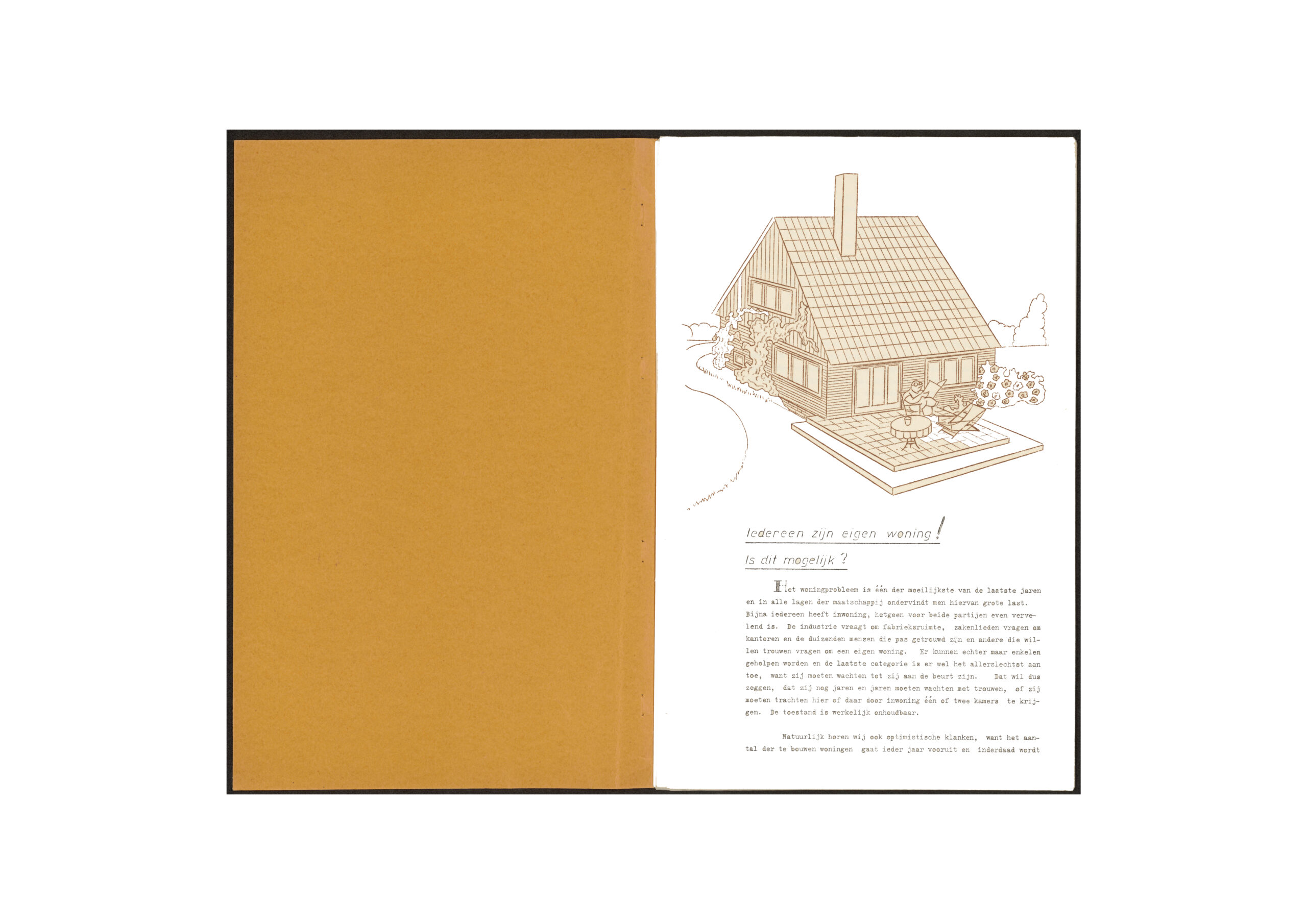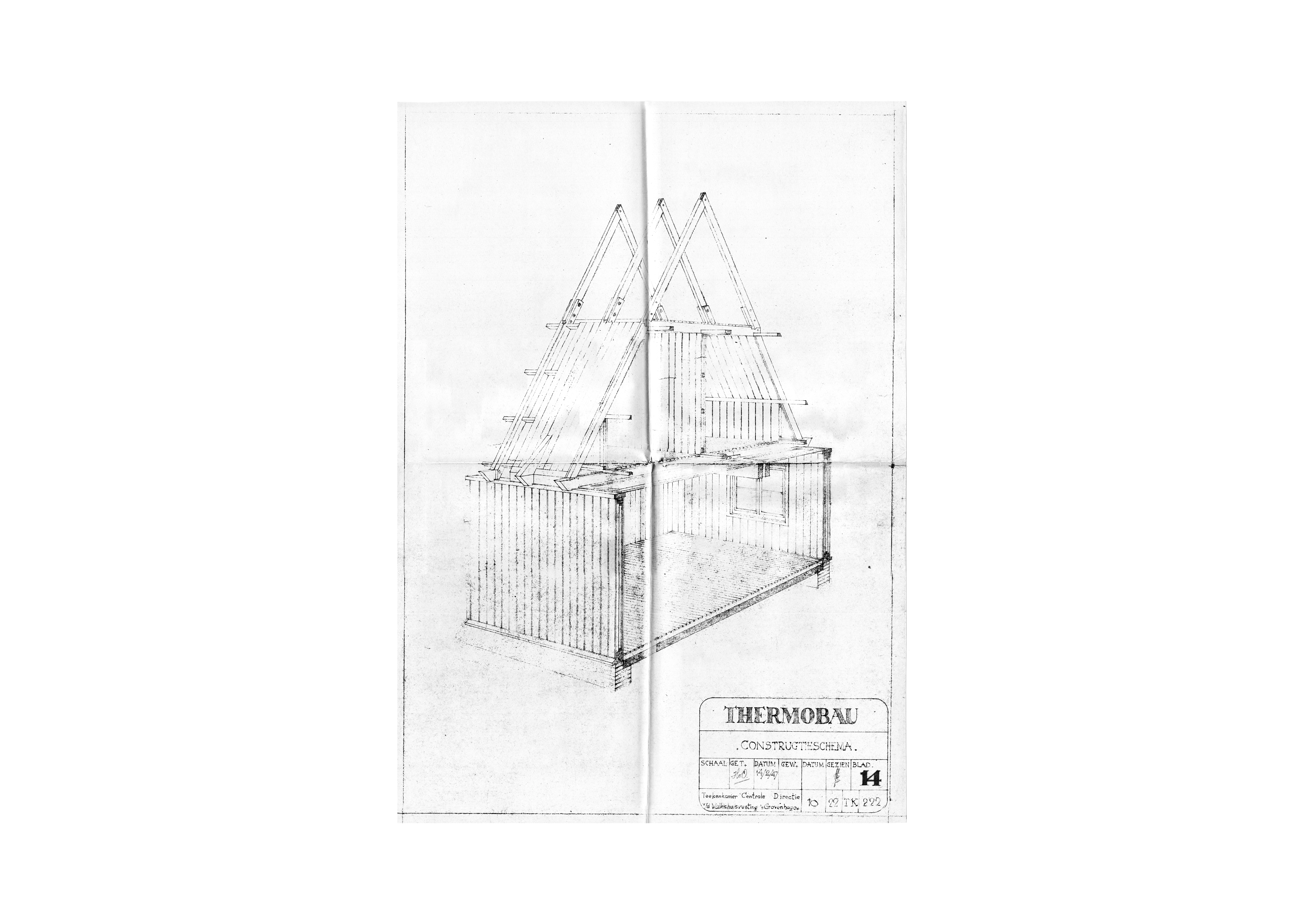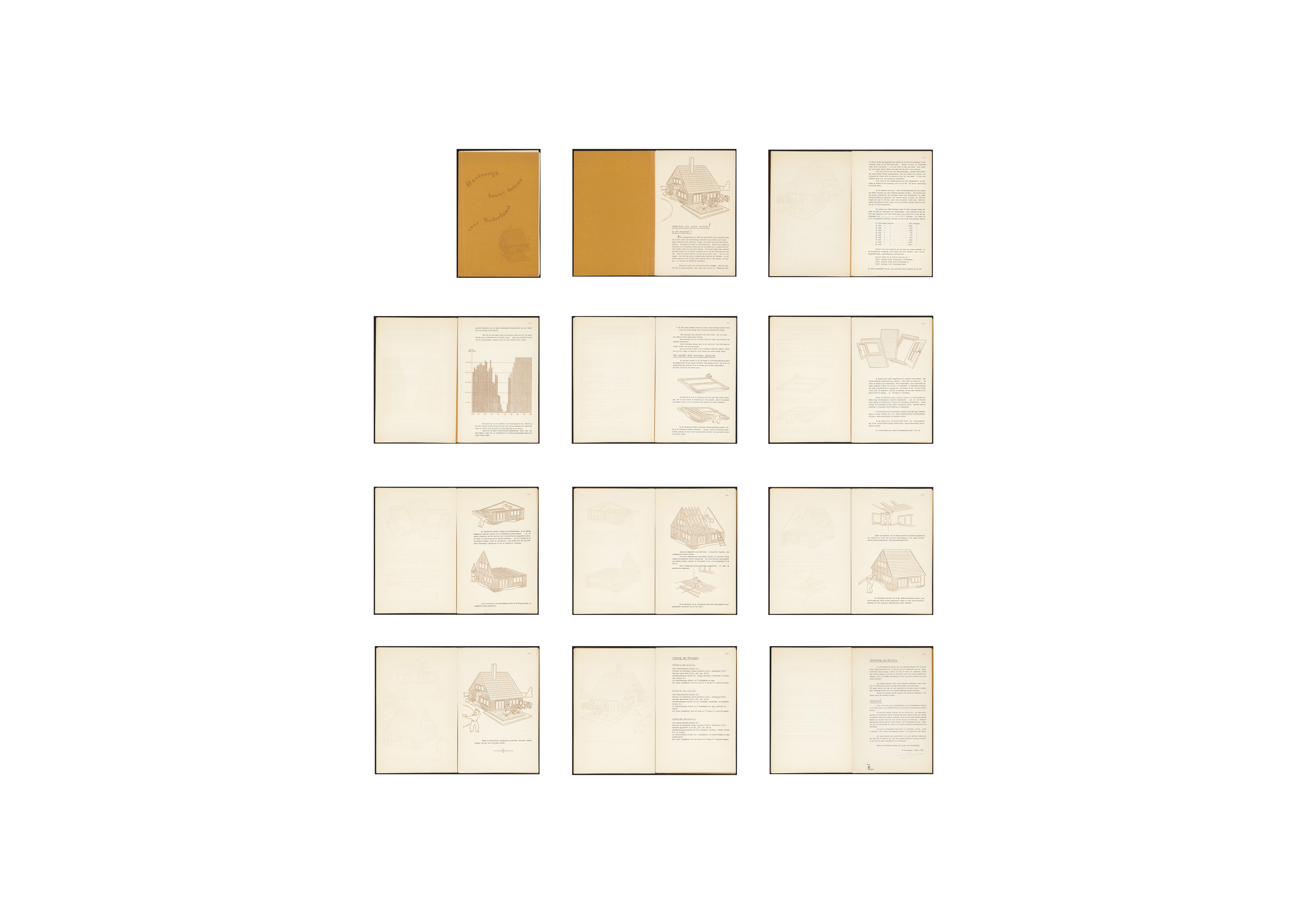
As part of solving the housing crisis after World War II, prefabricated wooden houses were imported by train from Austria. They were distributed over various municipalities where they were assembled by local contractors. Supported by The Creative Industries Fund NL, we are bringing together material from disparate archives around the Netherlands, reconstructing the story of the Austrian prefabricated wooden house.
Within the context of the current housing shortage in the Netherlands and the resurgence of interest in wood prefabrication, the Austrian prefabricated house offers valuable insights. The model of production with local small scale assembly and its compact freestanding house typology and spacious urban setting questions the large scale modularity commonly associated with prefabrication today. It offers a model for compact living within nature, suited for expanding rural communities and small scale densification developments bordering protected nature reserves.
Many of the Austrian houses are well past their envisioned life-span, they are highly valued by their inhabitants and most are listed buildings, making a case for the sustainability of its architecture.
source: Nationaal archief
supported by The Creative Industries Fund NL

As part of solving the housing crisis after World War II, prefabricated wooden houses were imported by train from Austria. They were distributed over various municipalities where they were assembled by local contractors. Supported by The Creative Industries Fund NL, we are bringing together material from disparate archives around the Netherlands, reconstructing the story of the Austrian prefabricated wooden house.
Within the context of the current housing shortage in the Netherlands and the resurgence of interest in wood prefabrication, the Austrian prefabricated house offers valuable insights. The model of production with local small scale assembly and its compact freestanding house typology and spacious urban setting questions the large scale modularity commonly associated with prefabrication today. It offers a model for compact living within nature, suited for expanding rural communities and small scale densification developments bordering protected nature reserves.
Many of the Austrian houses are well past their envisioned life-span, they are highly valued by their inhabitants and most are listed buildings, making a case for the sustainability of its architecture.
source: Nationaal archief
supported by The Creative Industries Fund NL

As part of solving the housing crisis after World War II, prefabricated wooden houses were imported by train from Austria. They were distributed over various municipalities where they were assembled by local contractors. Supported by The Creative Industries Fund NL, we are bringing together material from disparate archives around the Netherlands, reconstructing the story of the Austrian prefabricated wooden house.
Within the context of the current housing shortage in the Netherlands and the resurgence of interest in wood prefabrication, the Austrian prefabricated house offers valuable insights. The model of production with local small scale assembly and its compact freestanding house typology and spacious urban setting questions the large scale modularity commonly associated with prefabrication today. It offers a model for compact living within nature, suited for expanding rural communities and small scale densification developments bordering protected nature reserves.
Many of the Austrian houses are well past their envisioned life-span, they are highly valued by their inhabitants and most are listed buildings, making a case for the sustainability of its architecture.
source: Zeeuws archief
supported by The Creative Industries Fund NL

As part of solving the housing crisis after World War II, prefabricated wooden houses were imported by train from Austria. They were distributed over various municipalities where they were assembled by local contractors. Supported by The Creative Industries Fund NL, we are bringing together material from disparate archives around the Netherlands, reconstructing the story of the Austrian prefabricated wooden house.
Within the context of the current housing shortage in the Netherlands and the resurgence of interest in wood prefabrication, the Austrian prefabricated house offers valuable insights. The model of production with local small scale assembly and its compact freestanding house typology and spacious urban setting questions the large scale modularity commonly associated with prefabrication today. It offers a model for compact living within nature, suited for expanding rural communities and small scale densification developments bordering protected nature reserves.
Many of the Austrian houses are well past their envisioned life-span, they are highly valued by their inhabitants and most are listed buildings, making a case for the sustainability of its architecture.
source: Nationaal archief
supported by The Creative Industries Fund NL